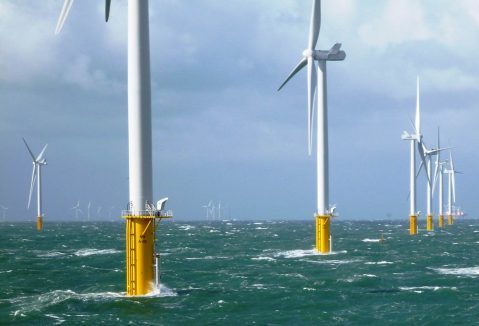A new study by climate scientists – published in the journal Environmental Research Letters – has advanced the understanding of the potential for wind power to provide energy during the coldest spells of winter weather.
The team, which involved scientists from the Met Office Hadley Centre, Imperial College London and the University of Reading, compared wind power availability with electricity demand in winter and they found an interesting result.
Hazel Thornton, of the Met Office Hadley Centre, is one of the paper’s authors. She said: “During winter in the UK, warmer periods are often windier, while colder periods are more calm, due to the prevailing weather patterns. Consequently we find that in winter as temperatures fall, and electricity demand increases, average wind energy supply reduces.
“However, contrary to what is often believed, when it comes to the very coldest days, with highest electricity demand, wind energy supply starts to recover”. The team found that during the highest 5% of energy demand days, one third produce more wind power than the winter average.
Hazel added: “The very coldest days are associated with a mix of different weather patterns, some of which produce high winds in parts of the UK. For example, very high pressure over Scandinavia and lower pressure over Southern Europe, blows cold continental air from the east over the UK, giving high demand, but also high wind power. In contrast, winds blowing from the north, such as happened during December 2010, typically give very high demand but lower wind power supply.”
The research suggests that a spread of turbines across Great Britain would make the most of the varied wind patterns associated with the coldest days – maximising power supply during high demand conditions. Results also suggest that during high demand periods offshore wind power provides a more secure supply compared to onshore, as offshore wind is sustained at higher levels.
Professor Sir Brian Hoskins, of the University of Reading and Chair of Imperial College London’s Grantham Institute – Climate Change and the Environment, is one of the paper’s other authors. He said: “A wind power system distributed around the UK is not as sensitive to still cold winter days as often imagined. The average drop in generation is only a third and it even picks up for the days with the very highest electricity demand.”
Finally the study highlights the risk of concurrent wide-scale high electricity demand and low wind power supply over many parts of Europe. Neighbouring countries may therefore struggle to provide additional capacity to the UK, when the UK’s own demand is high and wind power low.
The research – published in the journal Environmental Research Letters – included contributions from Imperial College London, and the Department of Meteorology at the University of Reading.
Ends
For further information, please contact:
Met Office:
For further information contact Met Office Press Office 01392 886655 or email pressoffice@metoffice.gov.uk
Imperial College London
Hayley Dunning, Research Media Officer
Email: h.dunning@imperial.ac.uk Tel: +44 (0)20 7594 2412
Out of hours duty media officer: +44 (0)7803 886 248
University of Reading:
Pete Bryant, Press Officer
Email: p.g.bryant@reading.ac.uk Tel: +44 118 378 5757 (24hr)
Broadcast interviews:
The Met Office’s Exeter office is equipped with a GlobeLynx camera and ISDN ready for live broadcast interviews. Contact our press team on 01392 886655 to arrange an interview with one of our experts. Once an interview has been arranged, bookings can be made at www.globelynx.com
The University of Reading has Globelynx and ISDN facilities for live television or radio interviews. Please contact the press office to find out more.
Share your industry press now!
Are you a PR agency or sustainability-focused organization? Join the World of Renewables network FREE today and gain exclusive access to our platform to promote your business, share the latest industry news, and connect with a global audience of 700,000+ renewable energy professionals.
Register Now to start posting your updates and showcase your expertise to a highly engaged, environmentally-conscious community.
Find out more about our Content Partnership Programs.*2024 AWARD WINNER* Websites & Mobile Sites, Webby Winner, Peoples Voice 2024












